Black Backgrounds
Black backgrounds—they’re artsy, stylish, sleek. Most importantly they can make a colorful subject “pop” against the flat black. But how do underwater photographers go about creating this effect?
About Black Backgrounds
The natural inclination when seeing an image with a black background is that it was taken at night, since the water is pitch black at this time. And while you can certainly capture black backgrounds at night, with the right settings and lighting you can do it even in the broad daylight.
The basic principal behind black backgrounds in macro photography is that all natural, ambient light is blocked out and only the subject is illuminated with your artificial strobe light. Of course, to block out the ambient light you’ll need to take control of your camera’s shutter speed and aperture through manual settings.
Using the right settings, you can create a stark black background even during the middle of the day
Equipment for Black Backgrounds
You can achieve black backgrounds with almost and camera (compact, mirrorless, and DSLR) as long as that camera and housing offers access to manual controls. DSLR and mirrorless cameras can be prepared with your standard macro setup, with the possibility of adding a wet lens for super-macro subjects or to reduce focusing distance. Strobes are also a must, as you’ll be blocking out all natural light, so they will be the only thing illuminating your subject. In bright conditions, when maximum shutter speed and aperture are required to completely black out the background, two strobes will likely be necessary for even lighting.
Any camera with the ability to control exposure settings manually has the ability to capture black water backgrounds, teamed up with artificial strobe light
Subjects for Black Backgrounds
There are no specific subjects that will automatically qualify for a black background. Similar to blue water background macro photography, the best subjects are those with nothing but open water behind them. Such subjects are often found on top of the reef, swimming in the water column, or living in a sponge or soft coral that sticks out into the water.
Of course, such ideal subjects are not always available, but there are ways to achieve black water backgrounds through strobe position and composition discussed in the sections below. We have to also make a note of saying that under no circumstances should you lift a subject up into the water column to get the shot.
Subjects on coral in the middle of the water column, like this whip coral blenny, make for promising black water background macro subjects
Subjects at the surface make for not only potential black background images, but also the option to capture a reflection
Black Background Camera Settings
The key to achieving black water backgrounds is to block out all the natural light so that the only light hitting your camera’s sensor is that produced by your strobes aimed at a subject. To do this, we’ll need to manually adjust the shutter speed and aperture, and perhaps ISO depending on the amount of available light.
For DSLR and mirrorless users with sufficient strobe output, the go-to settings to achieve black backgrounds are your fastest shutter sync speed (typically 1/200th to 1/320th) to block out as much ambient light as possible. Your aperture will likely be small to block out more light and maximize depth of field. A good starting point is f/11. If there’s more ambient light, you may be required to decrease the aperture size (f/18, f/22, f/32) to block out more light.
Compact users face the challenge that most compact built-in lenses have a minimum aperture of around f/8. The good news, is that you can compensate for this with faster shutter sync speeds: 1/500th of a second is a good starting point.
Combining fast shutter speeds with small apertures blocks all available light, so that the only areas illuminated are by what your strobe light hits
High aperture values not only block ambient light, but also increase the depth of field in your macro image
Black Background Lighting
For subjects with absolutely nothing behind them but open water, lighting for a black background is fairly easy. Once you’ve locked in your shutter speed and aperture values, begin by setting your strobes to 1/2 power. If you find that the subject is still too dim, increase power until it’s properly exposed. When shooting at maximum shutter speeds and minimum apertures, it’s possible you’ll need to use full power on your strobes to properly light the subject. In this case, make sure you’re pointing the strobes slightly outwards to minimize backscatter.
In the cases where there’s something behind the subject (rock, coral, etc.), you can tilt your strobes slightly inwards for a side-lighting effect. This will add more of a noticeable texture to the subject, as well as minimize any strobe light that would be hitting the undesired background.
When there’s no open water behind the subject, using side lighting can help selectively illuminate the subject, without hitting the unwanted background
An important note when reviewing images: Oftentimes when reviewing images through your camera’s display underwater, actually underexposed subjects will appear brighter than in reality. Take this into account when reviewing if your strobe power is sufficient. Consulting the histogram can also be beneficial.
Black Background Composition
Adjusting the composition can often turn an unpromising black background subject into a viable one. One basic technique is to always make sure you’re aiming your camera at an upward angle, rather than down onto the reef. For certain subjects that stick out from the reef, you can also try composing the shot from the side, as a profile.
Whenever attempting to take a black background image of a subject with anything behind it besides open water, you want to maximize the distance between that subject and the background, as well as minimizing the distance from your strobe to the subject.
Once you've found a viable black water subject, consider improving your composition with techniques like “leading lines” and “diagonals”
Final Thoughts
Although it might seem like a challenging technique, taking images with black backgrounds is actually fairly simple. You just have to use really fast shutter speeds and small apertures with high strobe output, while framing the subject against open water. Oftentimes, the hardest part is finding a suitable subject with nothing behind it. However, even in the case of subjects with backgrounds behind them, you can produce black backgrounds through strobe positioning and careful composition.
RELATED CONTENT
Featured Photographer

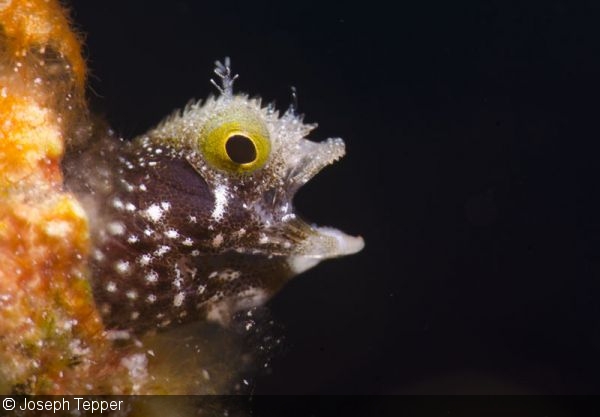
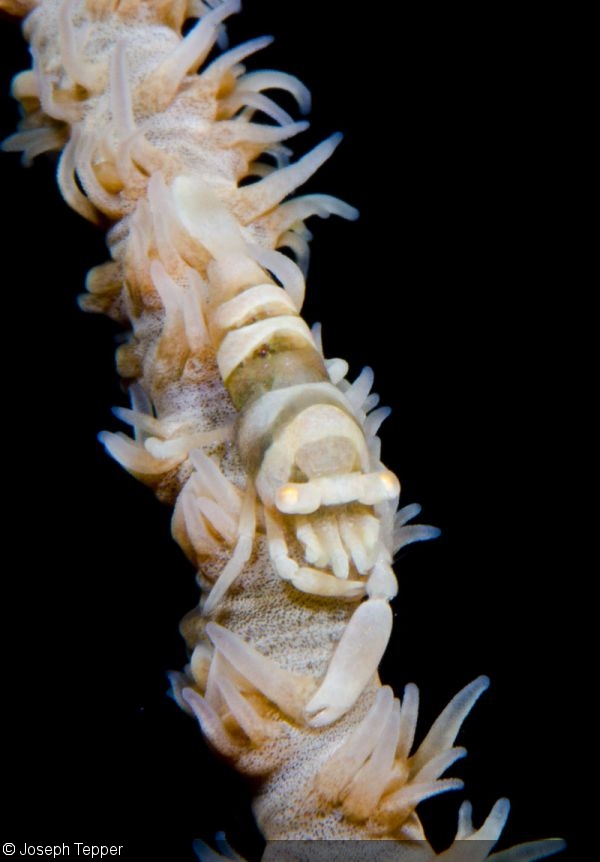

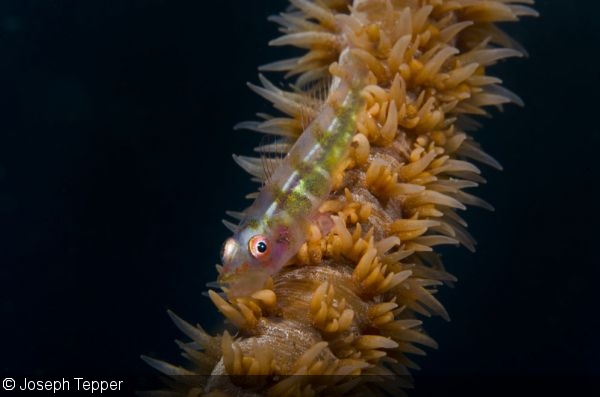
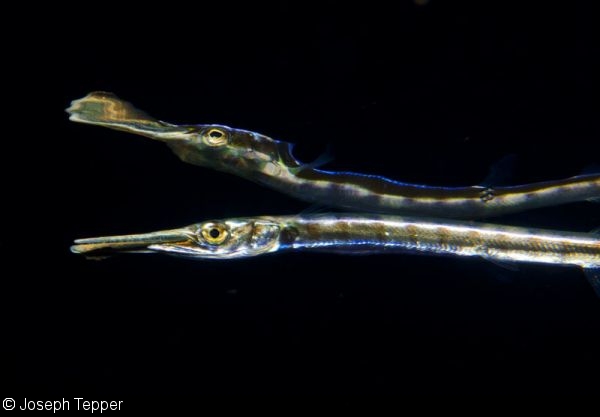
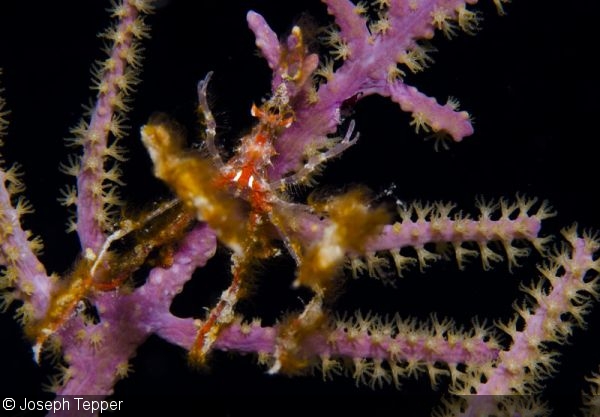

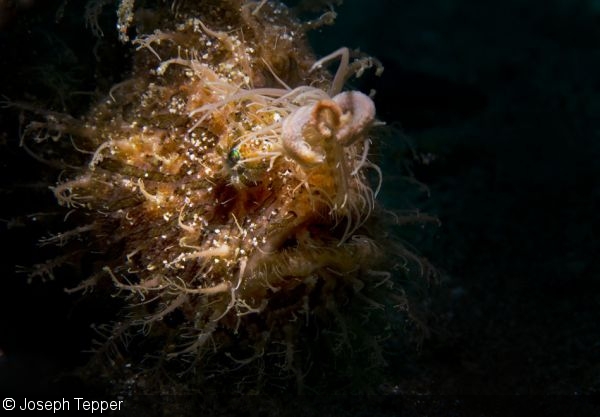
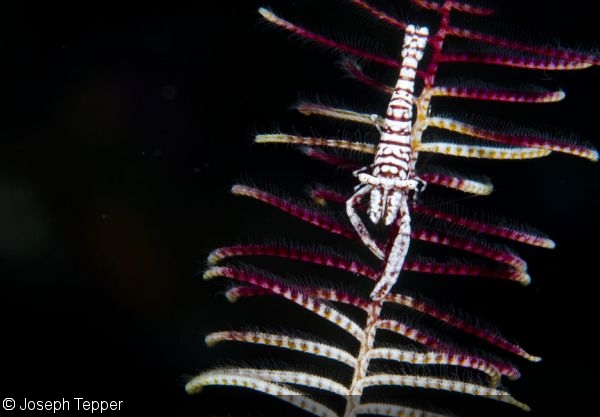
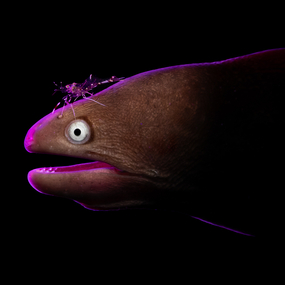
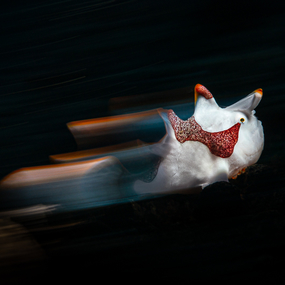
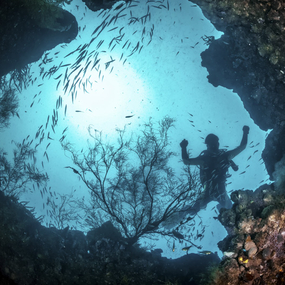
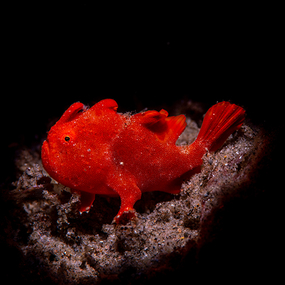
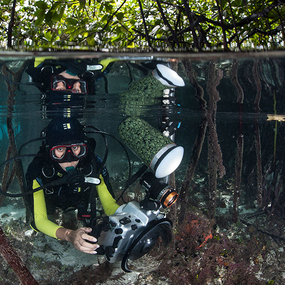
 Antarctica
Antarctica




